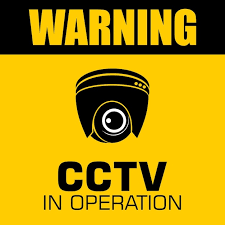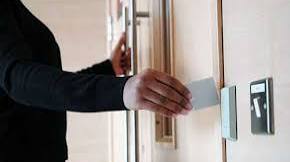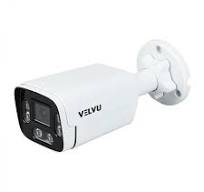Understanding the Operation of CCTV Systems
Closed Circuit Television (CCTV) systems play a crucial role in enhancing security and surveillance in various environments, including homes, businesses, public spaces, and government facilities. These systems consist of cameras, monitors, and recording devices that work together to capture and display video footage for monitoring and recording purposes.
The operation of a CCTV system involves several key components:
- Cameras: CCTV cameras are the primary devices used to capture video footage. They come in different types, including dome cameras, bullet cameras, PTZ (Pan-Tilt-Zoom) cameras, and more. These cameras are strategically placed in locations to provide optimal coverage of the area under surveillance.
- Monitors: Monitors are used to display the live feed from the CCTV cameras. Operators can view multiple camera feeds simultaneously on a single monitor or switch between different camera views as needed.
- DVR/NVR: Digital Video Recorders (DVRs) or Network Video Recorders (NVRs) are used to record and store video footage captured by the CCTV cameras. These devices allow for playback of recorded footage at a later time and provide storage options for archiving video data.
- Cabling and Connections: CCTV systems require proper cabling and connections to transmit video signals from the cameras to the monitors and recording devices. High-quality cables ensure reliable transmission of video data without interference.
- Power Supply: CCTV cameras require a power source to operate. Power supplies are essential components that provide electricity to the cameras for continuous surveillance.
- Control Room: In larger installations, a control room may be set up to monitor multiple camera feeds simultaneously. Trained operators monitor the live footage, respond to security incidents, and archive recorded video data for future reference.
Overall, the operation of a CCTV system involves capturing high-quality video footage, displaying it on monitors for real-time viewing, recording it for later analysis or evidence purposes, and ensuring continuous surveillance of the monitored area. With advancements in technology, modern CCTV systems offer features such as remote access via mobile devices, motion detection alerts, night vision capabilities, and high-definition video resolution for enhanced security monitoring.
By understanding how CCTV systems operate and utilizing them effectively, individuals and organizations can enhance their security measures and deter potential threats or criminal activities in their surroundings.
7 Essential Tips for Effective CCTV Operation and Maintenance
- Ensure the CCTV cameras are installed at optimal angles for maximum coverage.
- Regularly check and maintain the cameras to ensure they are clean and functioning properly.
- Secure the DVR/NVR in a locked cabinet to prevent tampering or theft of footage.
- Set up motion detection alerts to be notified of any suspicious activity captured by the cameras.
- Keep the camera lenses free from obstructions such as cobwebs or dirt for clear footage.
- Store CCTV footage in a secure location with restricted access to maintain privacy and confidentiality.
- Review and analyze the recorded footage periodically to identify any security threats or issues.
Ensure the CCTV cameras are installed at optimal angles for maximum coverage.
To maximize the effectiveness of your CCTV system, it is crucial to ensure that the cameras are installed at optimal angles to provide maximum coverage. Proper placement of CCTV cameras plays a significant role in capturing clear and comprehensive video footage of the monitored area. By positioning the cameras strategically and adjusting their angles correctly, you can eliminate blind spots and enhance surveillance coverage, thereby improving security monitoring and ensuring that no area goes unnoticed. Investing time in planning and installing CCTV cameras at optimal angles will ultimately result in a more robust and reliable security system for your premises.
Regularly check and maintain the cameras to ensure they are clean and functioning properly.
Regularly checking and maintaining CCTV cameras is essential to ensure they are clean and functioning properly. Dust, dirt, or debris accumulation on the camera lens can obstruct the view and impact the quality of video footage captured. By conducting routine inspections and cleaning of the cameras, users can prevent potential issues such as blurry images or obscured views. Additionally, checking for any signs of damage or wear and tear on the cameras allows for timely repairs or replacements to maintain optimal performance and reliability of the CCTV system. Regular maintenance not only helps in maximizing the effectiveness of surveillance but also prolongs the lifespan of the cameras, ensuring continuous security monitoring capabilities.
Secure the DVR/NVR in a locked cabinet to prevent tampering or theft of footage.
To enhance the security of your CCTV system, it is advisable to secure the DVR/NVR in a locked cabinet. By doing so, you can prevent unauthorized access, tampering, or theft of crucial video footage. Placing the recording device in a locked cabinet adds an extra layer of protection and ensures that the recorded data remains safe and intact for future reference or investigation purposes. This simple yet effective measure helps safeguard the integrity and reliability of your surveillance system, providing peace of mind knowing that your footage is secure from potential threats.
Set up motion detection alerts to be notified of any suspicious activity captured by the cameras.
Setting up motion detection alerts on your CCTV system is a smart way to enhance security monitoring. By configuring this feature, you can receive instant notifications whenever the cameras detect any movement or suspicious activity within the monitored area. This proactive approach allows you to stay informed in real-time and take immediate action if any potential threats are identified. Motion detection alerts not only help in preventing security incidents but also provide peace of mind by ensuring that you are always aware of what is happening in and around your premises.
Keep the camera lenses free from obstructions such as cobwebs or dirt for clear footage.
To ensure clear and effective CCTV operation, it is essential to keep the camera lenses free from obstructions such as cobwebs or dirt. Clean lenses are crucial for capturing crisp and high-quality footage, allowing the cameras to provide optimal surveillance coverage. Regular maintenance and cleaning of the camera lenses help prevent distortion or blurriness in the video feed, ensuring that important details are captured accurately. By maintaining clear lenses, users can maximize the performance of their CCTV systems and enhance overall security monitoring capabilities.
Store CCTV footage in a secure location with restricted access to maintain privacy and confidentiality.
To ensure the privacy and confidentiality of captured video footage, it is essential to store CCTV recordings in a secure location with restricted access. By implementing stringent access controls and encryption measures, organizations can prevent unauthorized individuals from viewing or tampering with sensitive video data. Restricting access to only authorized personnel who have a legitimate need to view the footage helps maintain the integrity of the surveillance system and protects the privacy rights of individuals captured on camera. Additionally, storing CCTV footage in a secure location mitigates the risk of data breaches or misuse of video recordings, enhancing overall security measures within the monitored environment.
Review and analyze the recorded footage periodically to identify any security threats or issues.
It is essential to review and analyze the recorded footage periodically to identify any security threats or issues. By regularly examining the recorded video data captured by CCTV cameras, security personnel can detect suspicious activities, unauthorized access, or potential security breaches. This proactive approach allows for timely intervention and response to mitigate risks and enhance overall security measures. Analyzing the footage also helps in identifying patterns of behavior, monitoring high-risk areas, and improving the effectiveness of security protocols based on real-time observations. Regular review of CCTV footage ensures that any security concerns are addressed promptly, maintaining a safe and secure environment for individuals and properties under surveillance.




